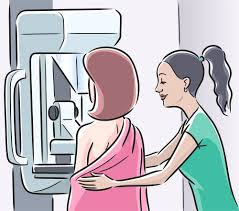A breast cancer symptom is usually detected as a lump on the upper or middle mammary region towards the armpit region of the breast. Everyone has seen the poster in the doctor’s office that shows the correct way to raise your arm and feel your own mammary glands, and it was an especially fun day in the 6th grade when your gym teacher separated the girls from the boys so that the girls could feel up the different silicone samples of each lumpy breast cancer symptom and giggle.
If one detects a breast cancer symptom early enough, it is usually treatable right away through surgery, radiation and chemotherapy. Because society tends to gear most educational literature and learning programs on detecting a breast cancer symptom towards women, not a vast majority of those educated are very aware that breast cancer is also something that happens in men. Breast cancer in men, although rare and accounting for less than1% of breast cancers, can tend to be painful and fatal or near fatal since not many people are able to properly recognize breast cancer in men’s symptoms early enough to treat it. By the time a man realizes that he has breast cancer, it has probably progressed and the that he might have could cause quite a bit of pain.
Some common breast cancer in men’s symptoms can usually be a firm and painful lump near the nipple, skin discoloration, puckering of the skin, a bloody or discolored discharge from the nipple, weakness, lethargy, and weight loss. Advanced breast cancer men’s symptoms can also result in bone pain at the location of the carcinoma where the cancer has metastasized. Men’s breast cancer commonly occurs in men ages 60 to 80 years of age. Usually the breast cancer and breast cancer men’s symptoms are a result of too much estrogen, alcohol abuse, Klinefelter’s syndrome, or radiation exposure. Once diagnosed, the cancer can be treated with surgery, removing the breast tissue. Additionally, chemotherapy and radiation treatment are incurred as a follow up treatment if recommended by a doctor.

No comments:
Post a Comment